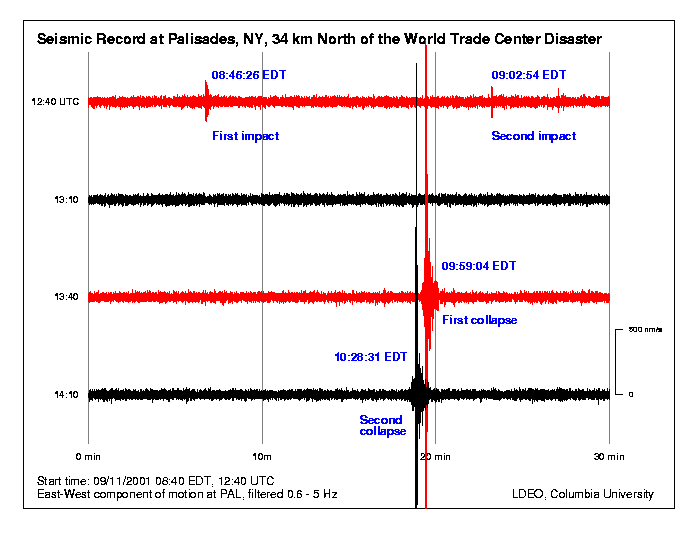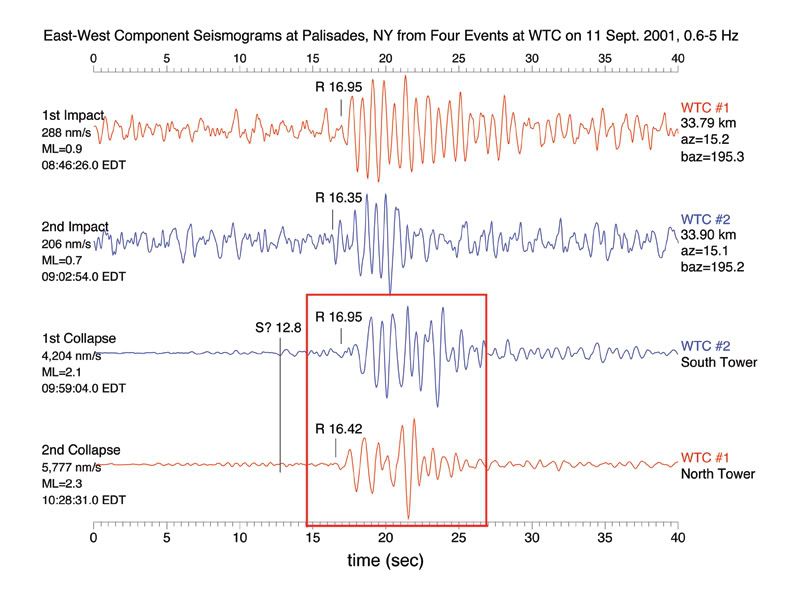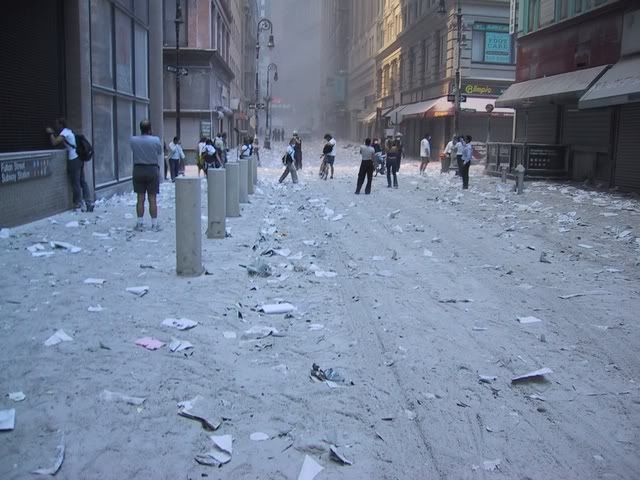|
SEISMOLOGICAL
OBSERVATION OF IMPACTS AND COLLAPSES AT WORLD TRADE CENTER
Seismology Group
Lamont-Doherty Earth Observatory, Columbia University
Palisades NY 10964
Version of 9/14/01
Seismograph stations in southern New York, northern New Jersey,
western Connecticut, and Pennsylvania, operated by the Lamont-Doherty Earth
Observatory of Columbia University, recorded the collapse of each of the
towers of the World Trade Center on Tuesday morning September 11 and the
subsequent collapse of 7 World Trade Center later that afternoon. The closest
station, at Palisades, New York, is located 21 miles (34 km) north of lower
Manhattan in Rockland County. This station also registered the impacts
of the two airliners that crashed into the towers.
The signals generated by the collapsing North and South towers
were much larger than those from the two airliner impacts. The signals
generated by the collapse of Building 7, however, were smaller than those
of the impacts. In addition, many smaller signals were registered at Palisades
throughout the rest of the day that may have originated from the further
collapse of the Twin Towers and the fall of walls and other debris in the
surrounding area.
The Palisades recordings of the Twin Tower collapses were comparable
in size to the signals from a small earthquake of seismic magnitude 2.4
that was felt in the east side of Manhattan and in the western parts of
Queens earlier this year, on January 17.
The seismic signals from the five events on 11 September
differed from a small earthquake in that they were richer in low-frequency
energy and poorer in high-frequency energy. These differences can be attributed
to the short time duration of the fault rupture responsible for the earthquake
as compared to the long and complex collapse of the buildings. The seismic
waves from the five World Trade Center events resemble those produced by
the collapse of a salt mine south of Rochester, in 1994.
The catastrophic events at the World Trade Center, as might be expected,
producedmuch larger seismic effects than the bombing of the World Trade
Center in 1993. The seismic effects of the collapses are comparable to
the explosions at a gasoline tank farm near Newark on January 7, 1983,
which were detected up to 130 miles away.
The seismographic stations are part of the Lamont-Doherty Cooperative
Seismographic Network, which is operated in conjunction with several other
institutions and is supported by the U.S. Geological Survey under the National
Earthquake Hazard Reduction Program. As part of its agreement with the
USGS, Lamont-Doherty makes this data available upon request without restriction.
Preliminary measurements made by Lamont-Doherty analysts are summarized
in the Table below: |





